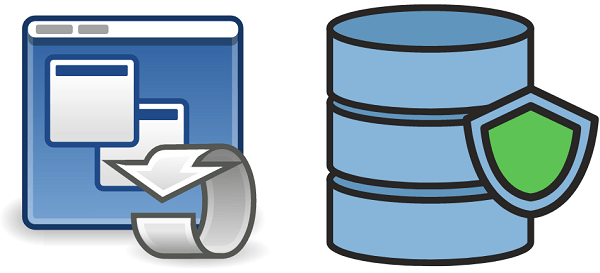What is a CRM Software and How to Use it?

Business leads or clients management program are other names for customer relationship management (CRM). It’s a piece of automated bespoke software made to help a business manage connections with both present and future clients. Besides, it is a technical method for organizing, automating, and synchronizing sales, marketing, customer care, and technical support.
Current industry advancements, however, show that management software is much more than just sales, marketing, customer service, and technical support.
Most importantly, it is being connected with all third-party on-demand solutions relevant to the company’s other divisions. Accounting Systems, Cloud Storage Services, IVR Telephone Systems, Personnel Management Departments, and so on are examples of such solutions.
Basically, it all began with a desktop application and has now developed into a cloud (Web-based) service. CRMs with web-based plans, often known as cloud-based CRMs, offer a better level of security than CRMs with desktop-only plans.
Highly technical executives from the server data center, specialized customer relationship management providers, and vendors monitor web-based CRMs. These are the individuals responsible for safeguarding the management System against hacking, malware assaults, and other crucial concerns.
Key Benefits of (CRM) Customer Relationship Management Software
- Enhances Customer Service
- Sales Growth
- Increase Customer Retention
- Improved Analytics
- Greater Efficiency
- Increased Knowledge Sharing
- Wider Transparency
Detail explanation of each key benefits of CRM, highlighting the importance of why CRM systems are necessary in businesses.
Enhances Customer Service
A CRM maintains all your connections and compiles prospect and client information to create records of everyone you communicate with. This provides you with rapid access to crucial information that can assist you in evaluating client behavior. Purchase data, bills, phone logs, emails, chat records, and so on are examples of such information. Customers will no longer need to rehash their narratives to you, and you will be able to resolve issues using guiding principles. As a consequence, there might be less bother, which leads to better client satisfaction.
CRM for Sales Growth
Improving sales will undoubtedly follow from simplifying the sales process, creating funnels, automating processes, and analyzing your sales numbers. Additionally, with a CRM system, you can access all of your client call, conversation, and emails interactions in one location. Building a repeatable, effective sales process and sending the proper information on the correct channels at the appropriate moment can help you close more business.

Increase Customer Retention
Long – term customer and turnover rates are critical factors in an organization’s growth; customer turnover is a key impediment to corporate growth. CRM solutions like as trend analysis, computer controlled reporting, and customer help desk and service automation may significantly enhance retention by allowing people and machines to troubleshoot issues. Longer sales cycle analytics solutions can demonstrate you when and why switching occurs, allowing you to identify and fix pain areas.
Improved Analytics
CRM analytics technologies make your data more accessible, understandable, and relevant to your company needs. All of your sales, financial, and marketing data streams into CRM to become observable KPIs, with data storage and data analysis on hand to make meaning of it all. Customer engagement, loyalty, and improved data governance are the ultimate results.
CRM Greater Efficiency
Combining all of your important day-to-day company tasks in one location improves productivity, team communication, and data management. Work mechanization makes time available for the executive processes that humans excel at. However, monitoring systems and analytics can assist you obtain insights into your job and enhance various corporate deployments.
Increased Knowledge Sharing
Two significant distractions are ineffective communication and a lack of data sharing. You lose a lot of hours each week when staff spend time self-learning skills that other coworkers already possess or working on repetitive activities. By enabling you to create a skillset, set up best practice routines, and facilitate seamless communication between team members, collaborative CRM technologies may streamline your cooperation.
Wider Transparency with CRM
Furthermore, by assigning tasks, displaying completed work, and clearly defining who owns what and who is responsible for what, a CRM system enables you to promote better visibility in your company. Productivity surveillance for specific sales agents might be used if sales are your top priority. Basically, a CRM platform improves communication and cooperation within your organization by enabling everyone to see your business operations.
How to Use CRM in an Organization More Efficiently
How to use CRM does not necessarily indicate how to utilize its features in a literal sense; rather, it refers to how precisely you must use it in your business to make it work better for you. The three primary elements that focus on how one should use the CRM to get the most out of it are listed below.

1. Adapt Your CRM to Your Business Needs
It doesn’t matter whatever CRM platform you select as long as it is functioning and meets your company’s needs. Any system you use in its current form is not ideal for you since it doesn’t address your specific problems. Therefore, it’s crucial that you first pick the CRM platform based on your preferences, budget, and needs before having it modified for the capabilities it lacks. so that you may maintain all of your business activities there. And it can undoubtedly be demonstrated as the greatest system for your business that no service provider in the entire world can offer.
2. Maintain Database Information
Every single record must be entered into your CRM system, which is crucial. It will be to your advantage to study every facet of business operations if the system has more data recorded. Hence, lack of data in the CRM system will prevent adequate reports from populating to provide you a clear picture of where your business stands in the corporate world. To ensure that everything is in order and that you have complete control, every business-related action should be recorded in the system.
3. Educate your Staff
It is one thing to have the ideal system for your business, but it is quite another and equally important to train all of your employees to utilize it. The issue of convincing their staff to embrace automation is a difficult one for companies. But this may be readily fixed by providing more relevant and simple training to every single employee. Additionally, it is crucial that staff members receive full training on CRM systems and receive education on why these systems are crucial for both organizations and themselves. This strategy will increase their self-assurance and prevent any annoyance with the processes.
The top CRMs accessible in the Free Open Source CRM category are
Vtiger CRM and SugarCRM.
We have a how to use Vtiger CRM User Guide and
a live working Demo
to help you replicate the instructions from the User Guide in it.
After this you can let us know if you need any further customization in order to fit your exact business needs.